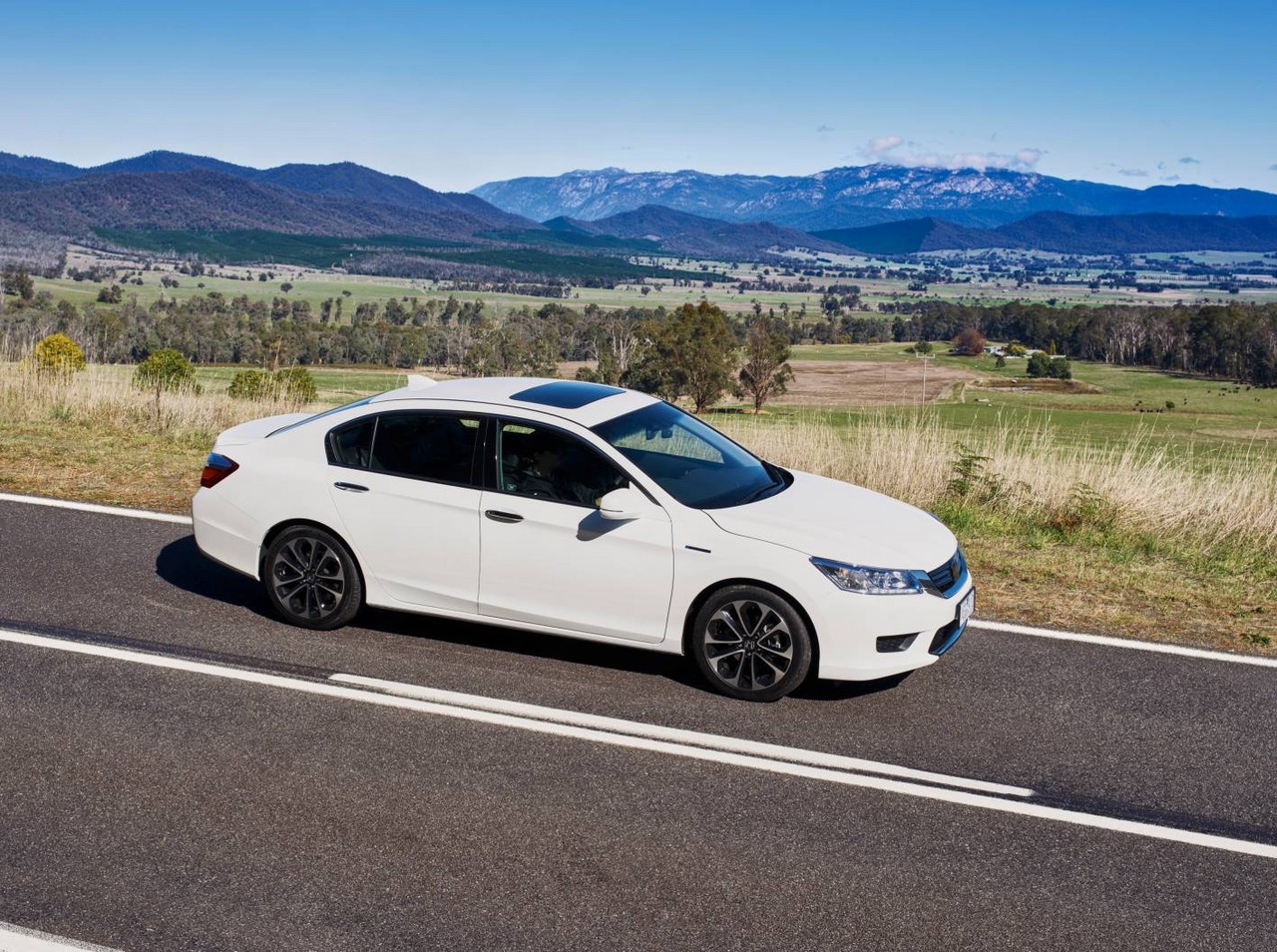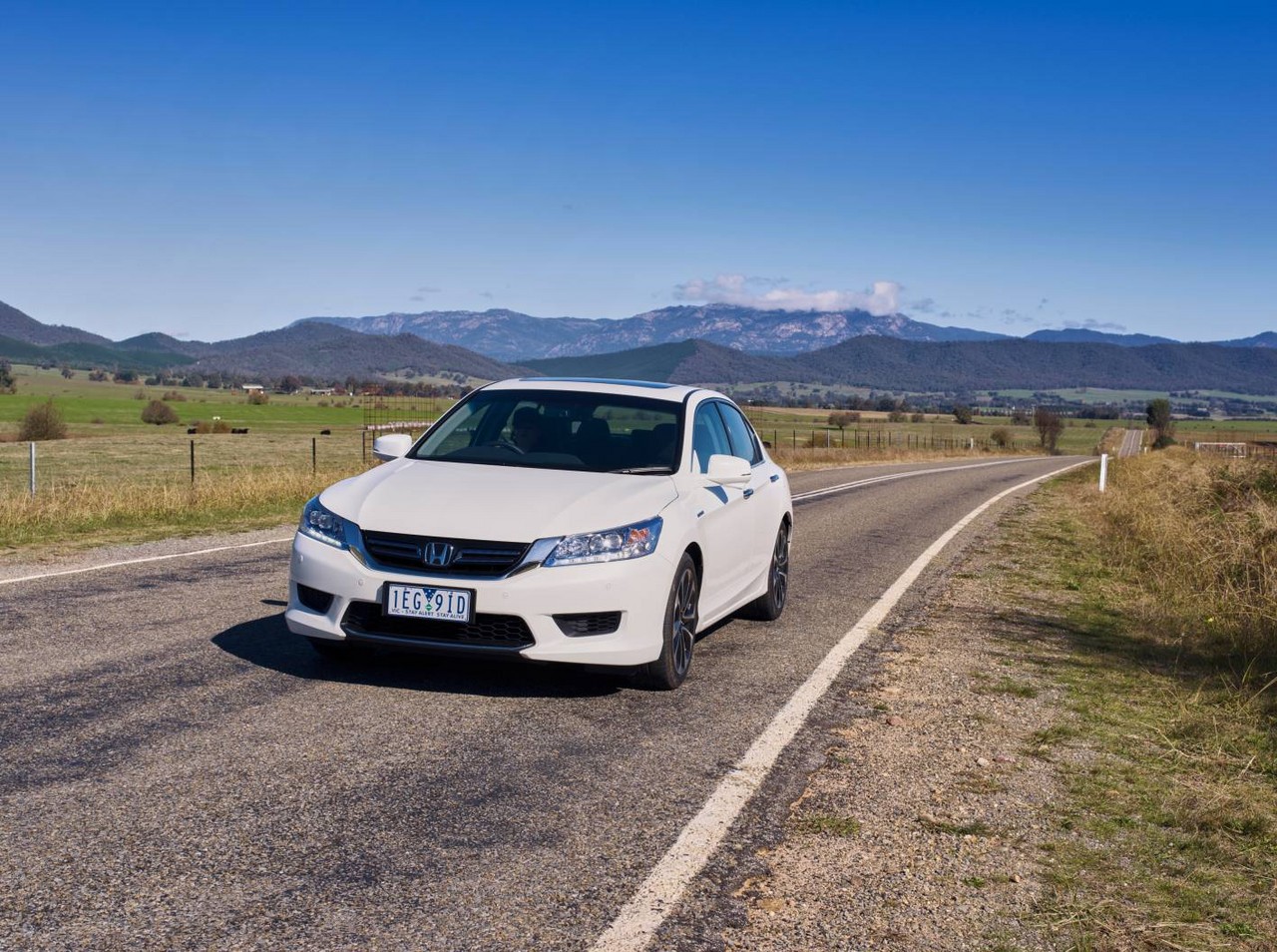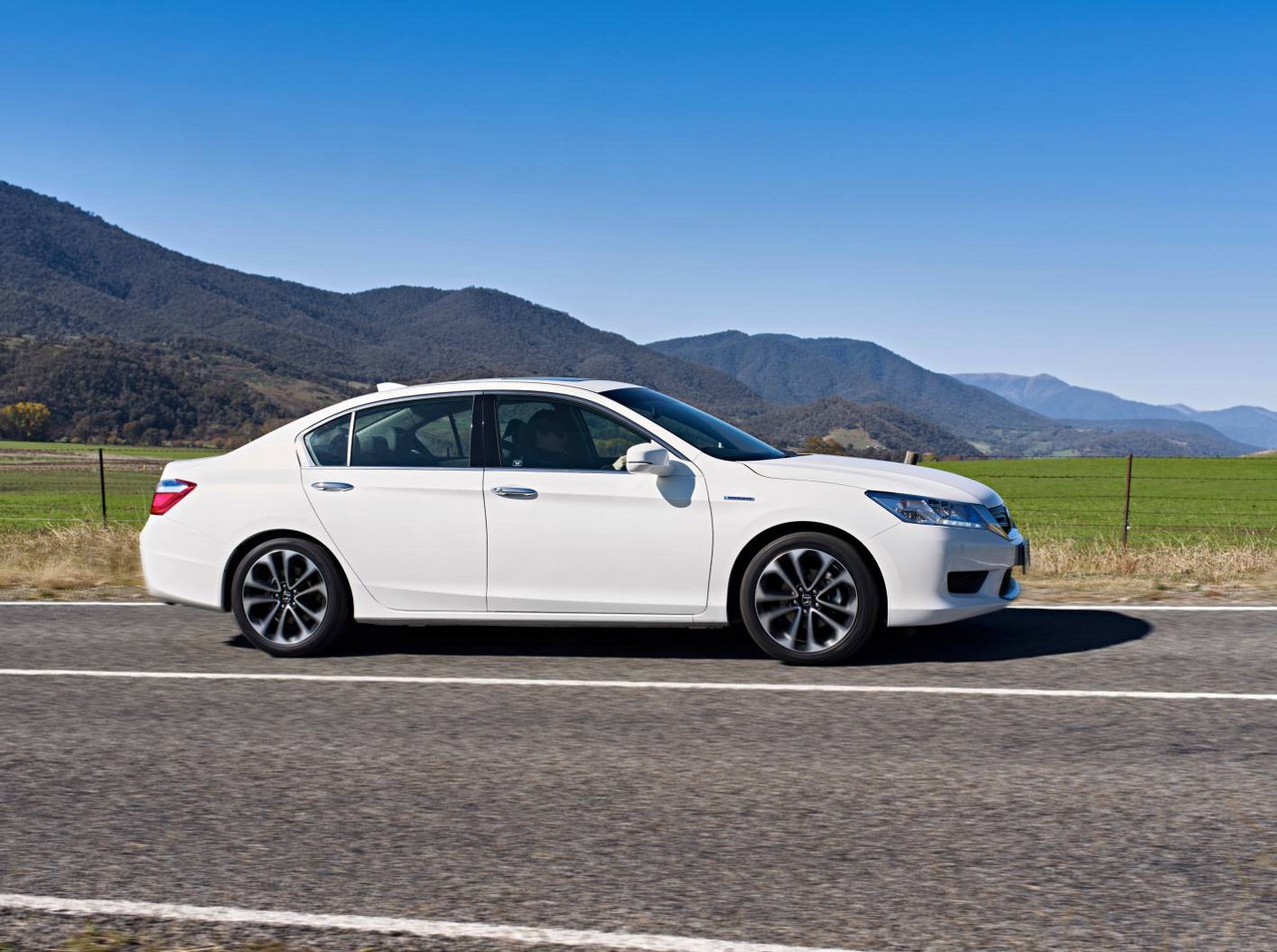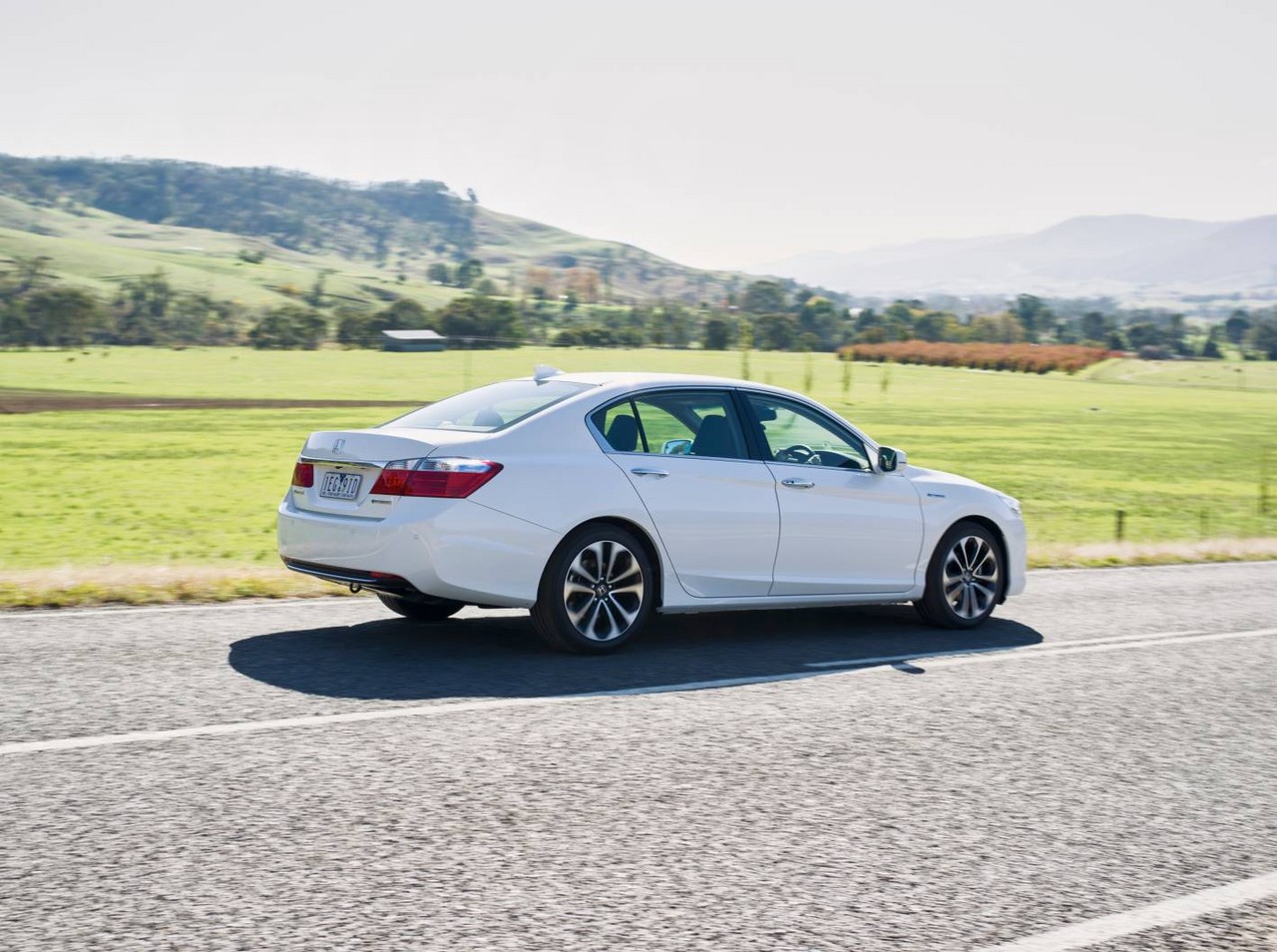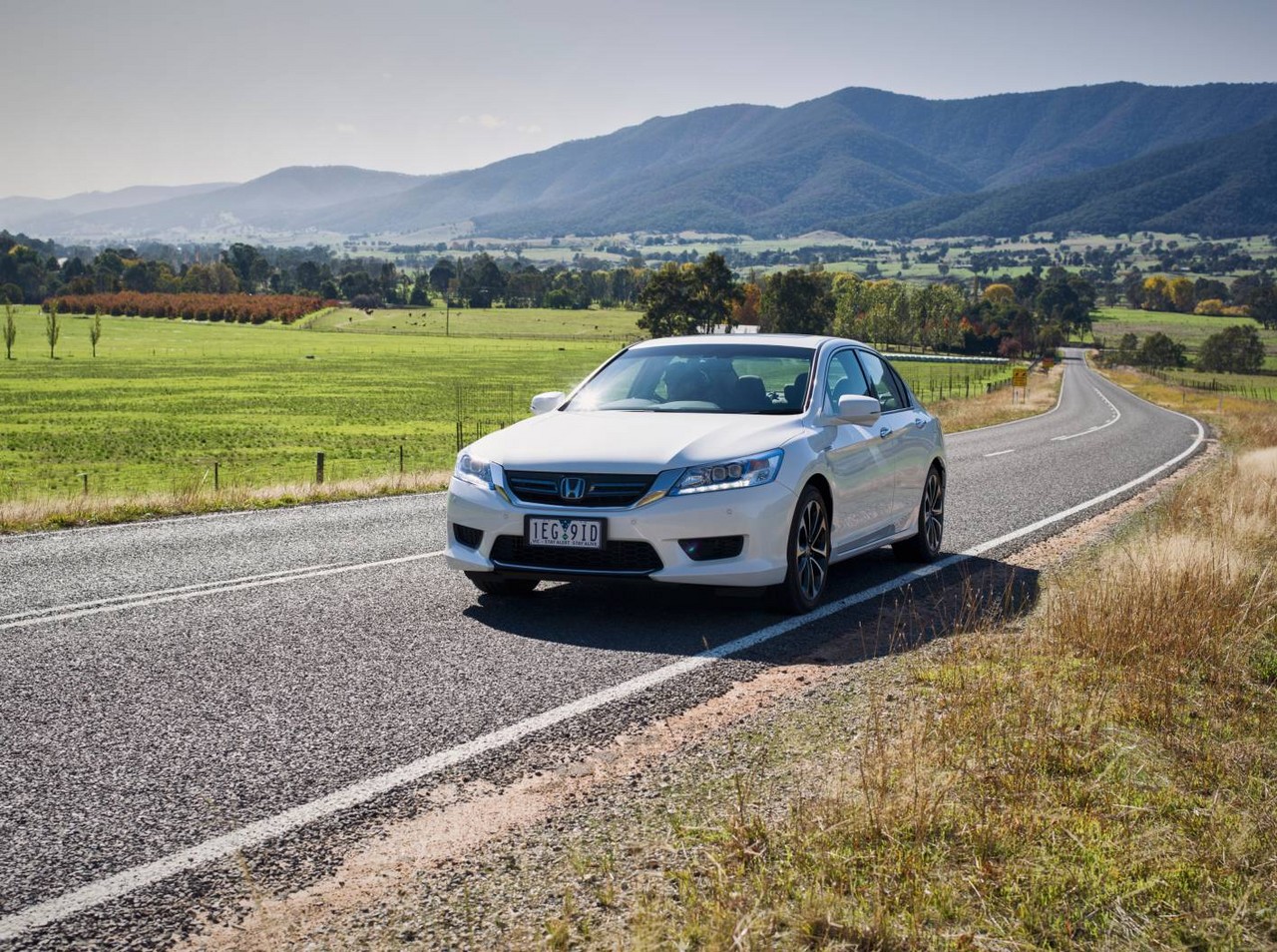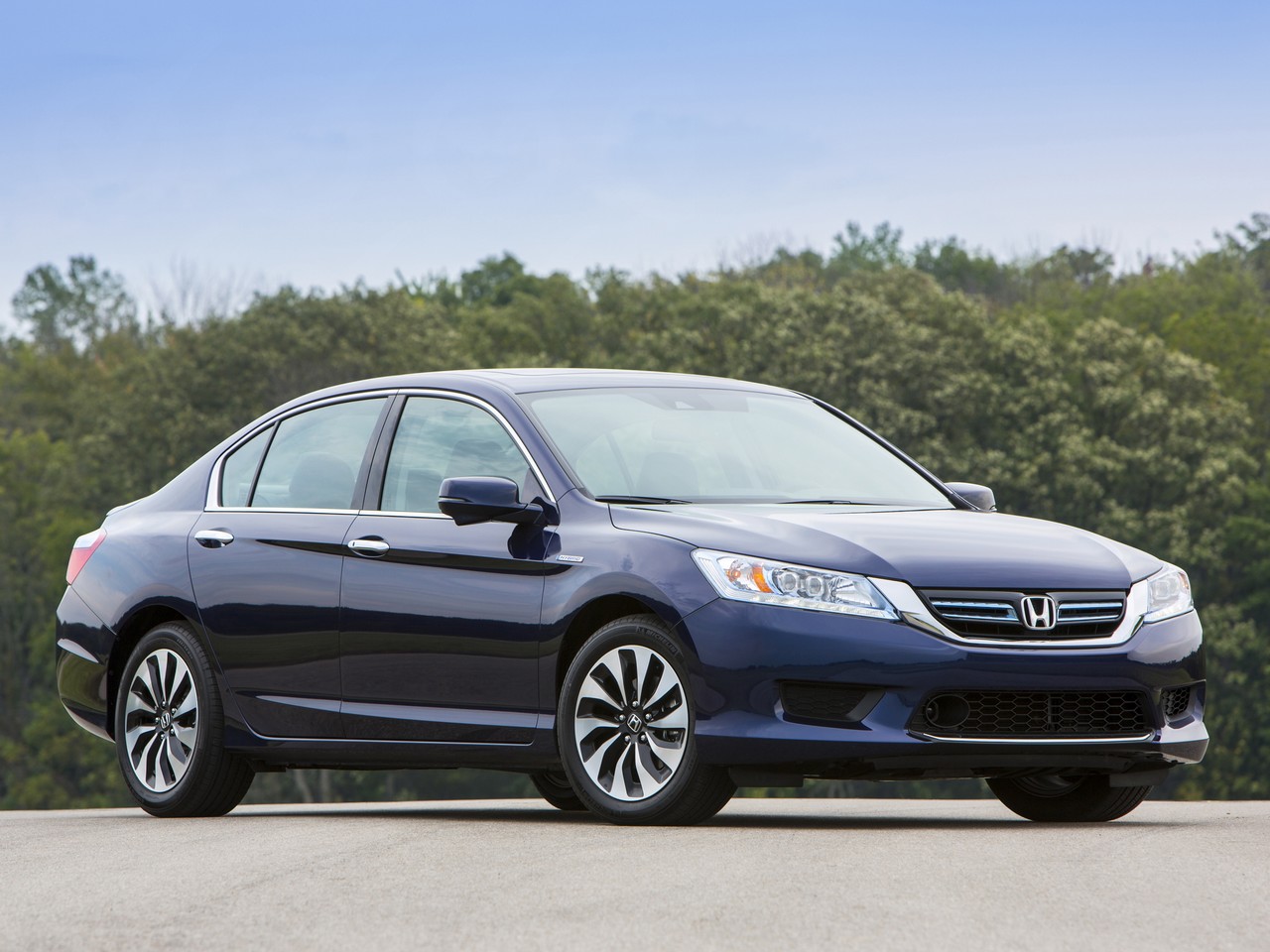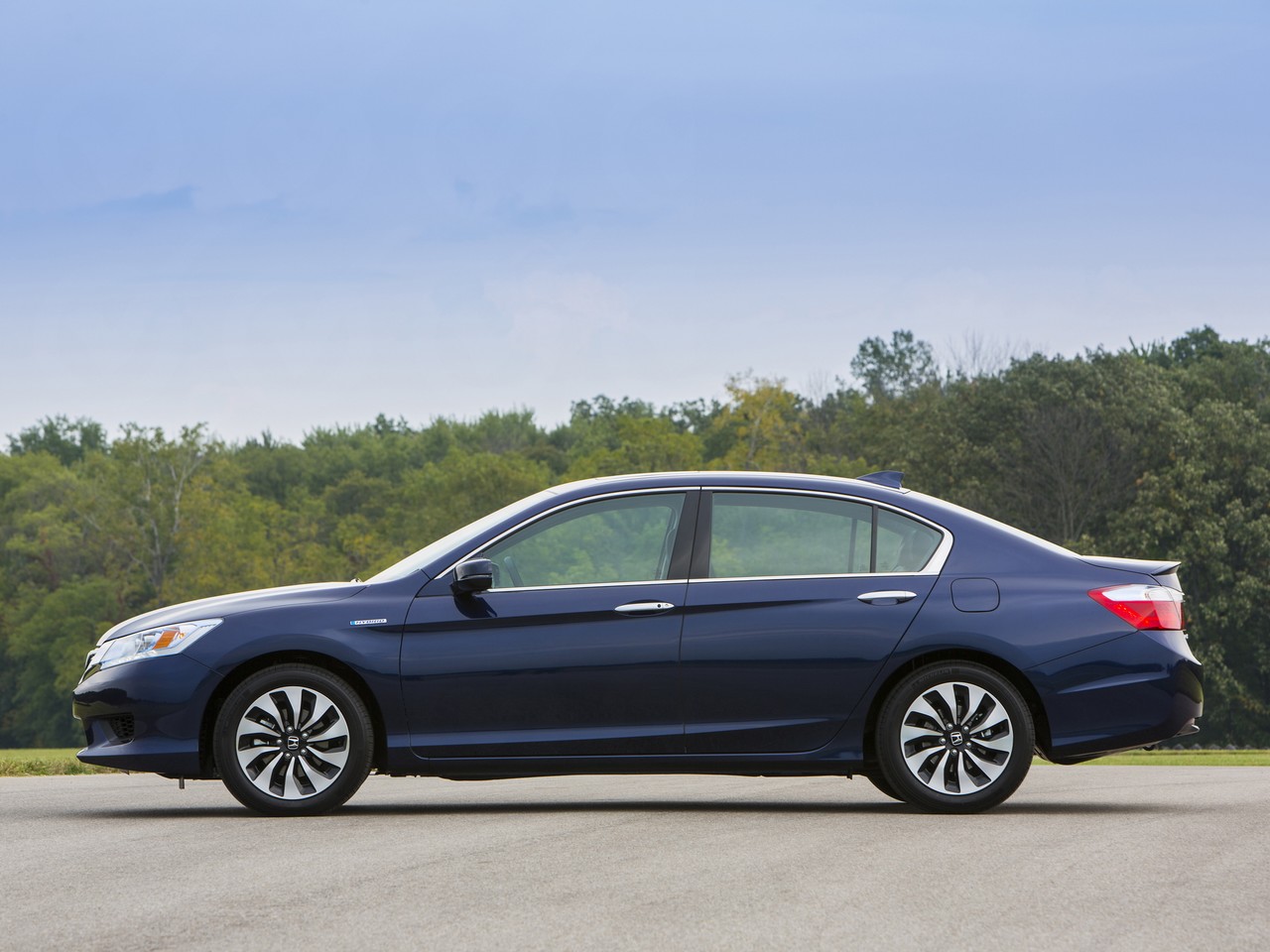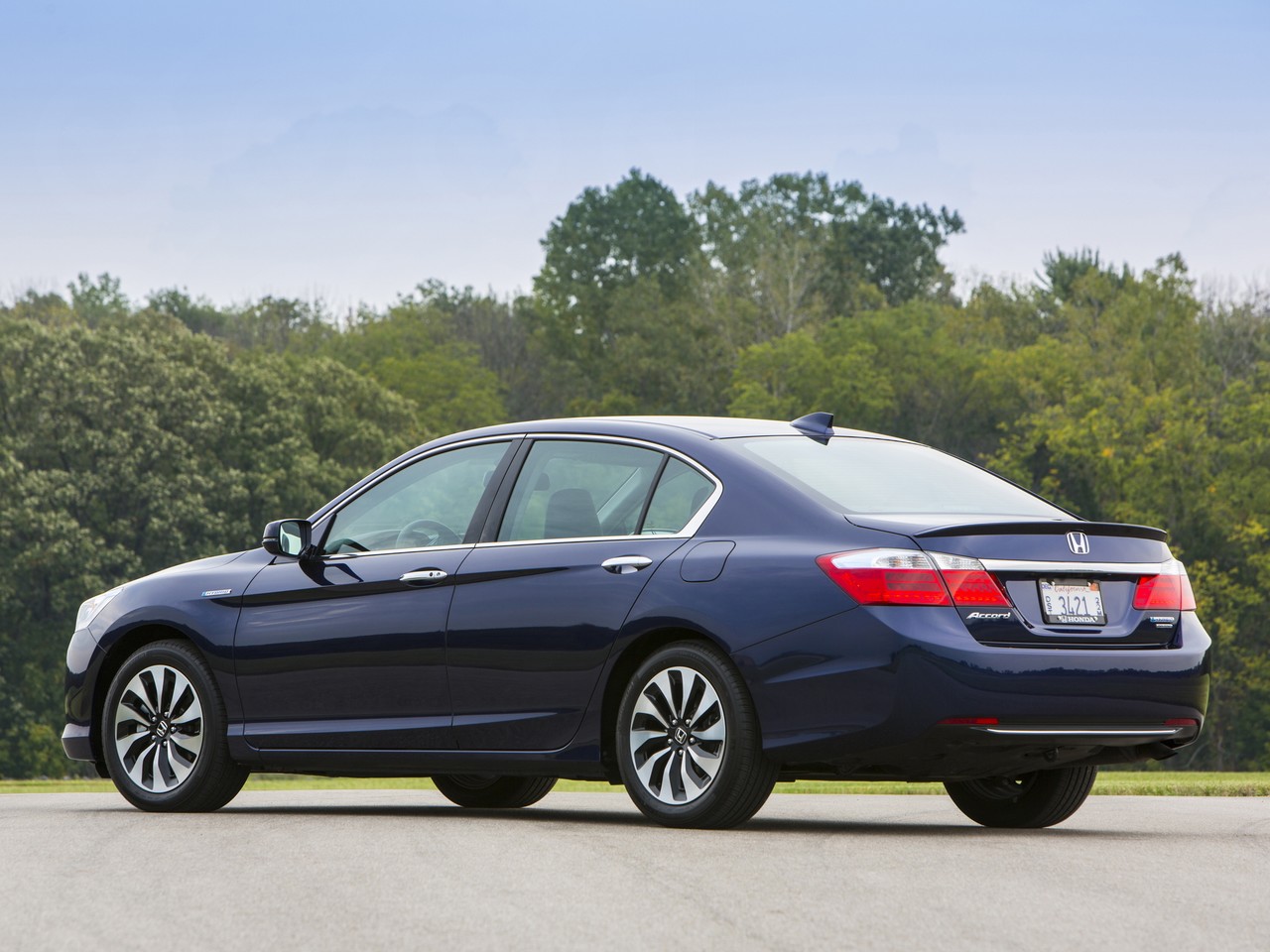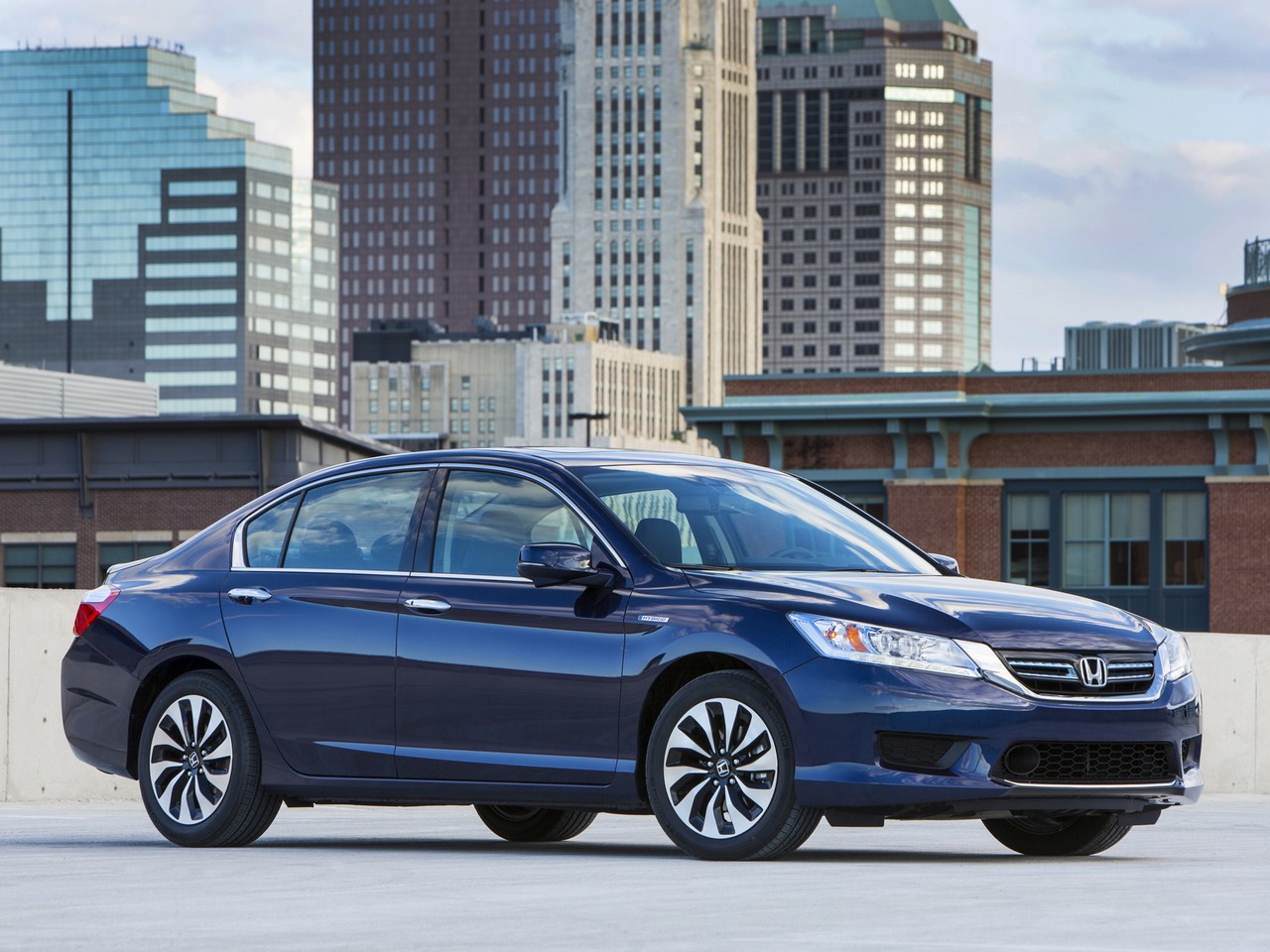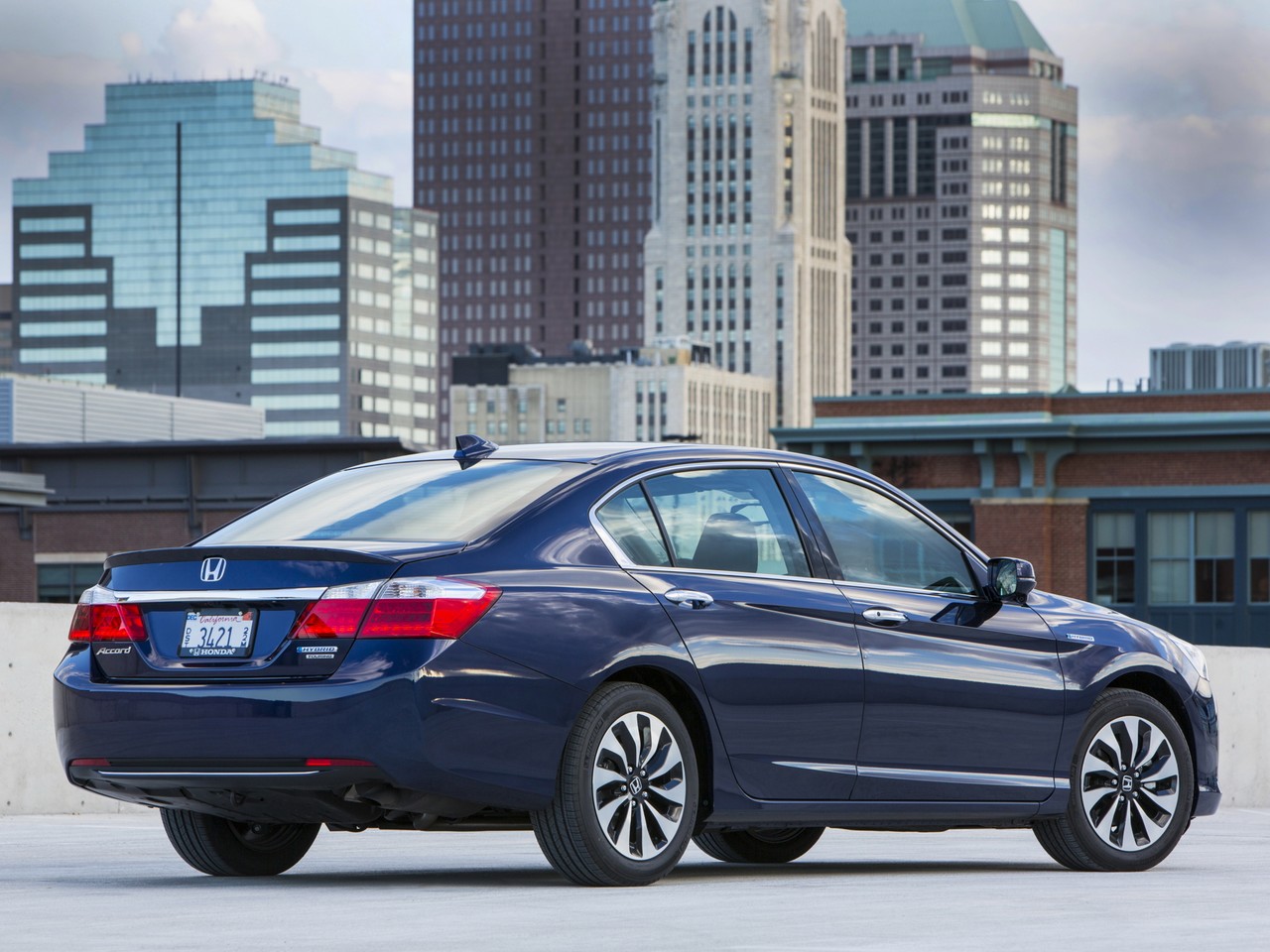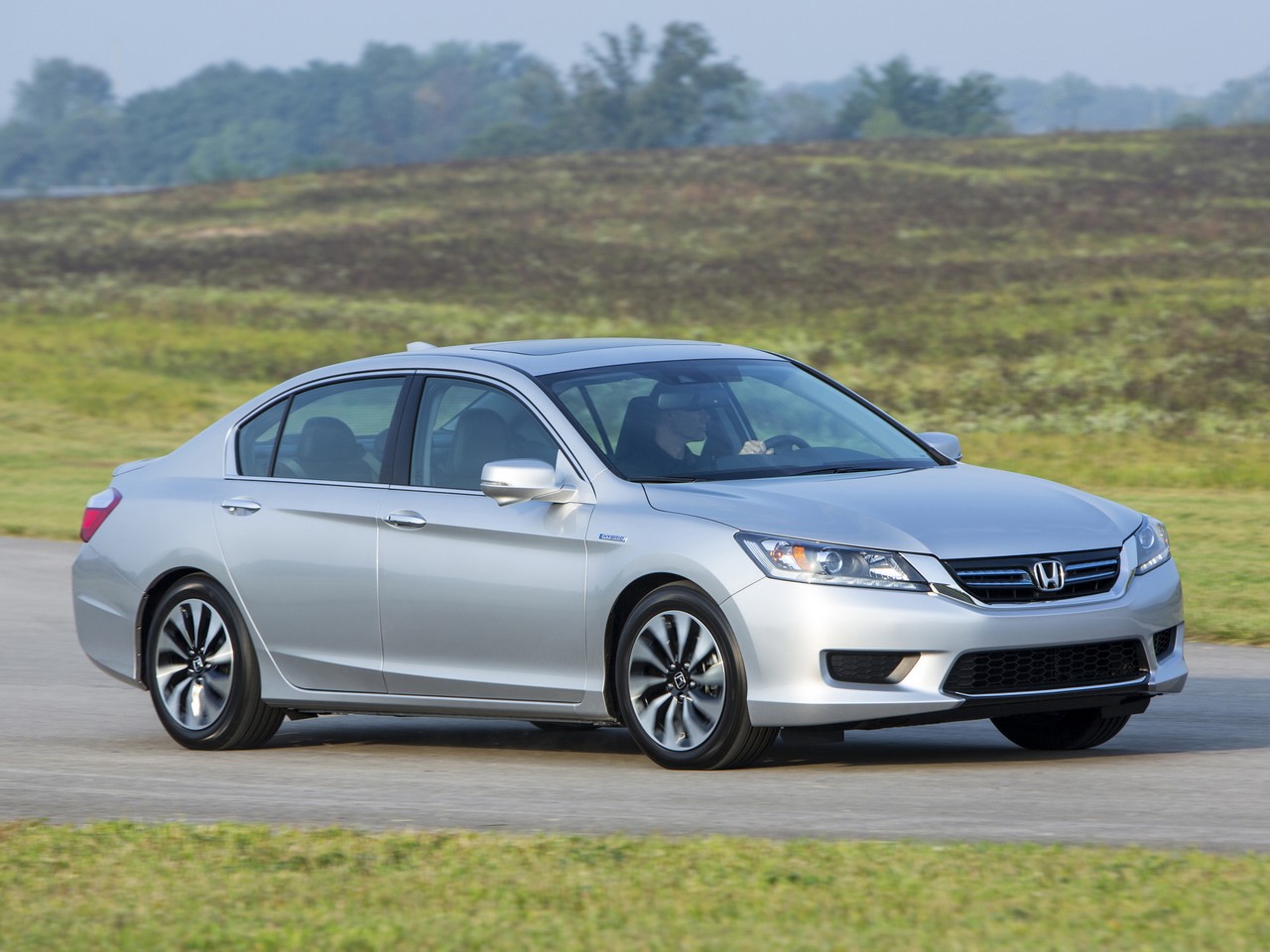
- Fuel-efficient powertrain
- Spacious interior
- Suspension lacks compliance
- Light steering lacks feel
- Tyre and wind noise
- High retail price and depreciation
Overview
Released in Australia in June 2015, the Honda CR6 Accord Sport Hybrid was a mid-size sedan with a hybrid powertrain. Manufactured in Ayutthaya, Thailand, the front-wheel drive CR6 Accord Sport Hybrid was powered by a permanent-magnet propulsion motor and, in ‘Engine Drive’ mode, a 2.0-litre four-cylinder petrol engine.
From 1 July 2017, the Honda CR6 Accord Sport Hybrid was sold with a five year, unlimited kilometre warranty; if the vehicle was used for commercial purposes, however, the warranty was limited to five years or 140,000 kilometres, whichever came first.
Intelligent Multi-Mode Drive (i-MMD) system
The Accord Hybrid’s ‘Intelligent Multi-Mode Drive’ (i-MMD) system consisted of:
- A 2.0-litre Atkinson-cycle petrol engine;
- A 124 kW AC synchronous permanent-magnet propulsion motor that was linked to the front wheels;
- A separate generator motor that is connected to the petrol engine;
- A 1.3 kWh lithium-ion battery; and,
- An Electric Continuously Variable Transmission (E-CVT) which was not a conventional physical transmission but controlled petrol engine and electric motor rotation. As such, the E-CVT did not have a torque converter, mechanical pulley or belt. The E-CVT could be operated in ‘D’ (Drive) mode or ‘B’ (Brake) mode which increased regenerative braking (described further, below).
The i-MMD system was able to select from three modes according to the driving situation:
- EV Drive: used the electric motor only when accelerating from rest and under light loads (i.e. light acceleration and lower-speed cruising). Furthermore, the petrol engine was decoupled from the drivetrain to reduce friction;
- Hybrid Drive: used the electric motor to drive the front wheels while the petrol engine provided added electrical power to the propulsion motors or recharged the lithium-ion battery; and,
- Engine Drive: used the petrol engine and electric motor to provide propulsion via the E-CVT for medium- to high-speed cruising. In Engine Drive mode, the E-CVT would engage its lock-up clutch for maximum efficiency.
In addition to the petrol engine acting as a generator to recharge the lithium-ion battery, the Accord Sport Hybrid had a regenerative braking function which used the kinetic energy of the wheels when the vehicle was braking to drive the generator.
The 2.0-litre four-cylinder petrol engine had an aluminium-alloy block, cast-in iron cylinder liners, a micro-polished crankshaft that was made from forged steel, a pressure-cast aluminium alloy cylinder head, double overhead camshafts (chain-driven), four valves per cylinder with a 3.4 degree included valve angle, a variable length intake manifold, drive-by-wire throttle control, a compression ratio of 13.0:1 and two counter-rotating balance shafts. The petrol engine also featured:
- i-VTEC (Intelligent Variable Valve Timing and Lift Electronic Control): changed the lift profile, timing and duration of the intake valves; and,
- E-VTC (Electronic Variable Timing Control): continuously adjusted the intake camshaft phase.
Over the combined ADR 81/02 test cycle, fuel consumption for the Accord Sport Hybrid was 4.6 litres per 100 km.
| Engine | Trans. | Peak power | Peak torque | |
|---|---|---|---|---|
| Accord Hybrid | 2.0-litre petrol I4 | E-CVT | 105 kW at 6200 rpm | 165 Nm at 3500-6000 rpm |
| Electric motor | 124 kW | 307 Nm | ||
| Combined | 146 kW | 307 Nm | ||
Dimensions and body
Compared to the CR2 and CR3 Accord , the Accord Sport Hybrid was 15 mm shorter (at 4870 mm), the same width (1850 mm) and 5 mm taller (1465 mm), though wheelbase length was unchanged at 2775 mm.
Boot capacity for the Accord Hybrid was 415 litres: 381 litres above the boot floor and a further 34 litres below; the Accord Sport Hybrid was not fitted with a spare wheel but had a tyre repair kit. To reduce mass, the CR6 Accord Hybrid had an all-aluminium front subframe (rather than a steel and aluminium subframe) and an aluminium rear bumper beam.
Compared to the CR2/CR3 Accord, the Accord Sport Hybrid could be identified by its:
- Blue-accented upper grille;
- Blue-accented head- and tail-lights;
- Bright LED daytime running lights;
- ‘Hybrid’ badges on the front guards and boot lid; and,
- Unique rear diffuser.
Steering and suspension
The CR6 Accord Sport Hybrid had power-assisted steering, MacPherson strut front suspension and independent, multi-link rear suspension. The Accord Sport Hybrid was fitted with ‘Amplitude Reactive Dampers’ which consisted of:
- A primary piston that operated for low-speed, low-amplitude suspension response (e.g. even roads with only minor surface irregularities); and,
- A secondary piston that would also operate to provide additional damping force for high-speed, high-amplitude response (e.g. uneven, rougher roads).
Compared to the standard CR2/CR3 Accord, the Accord Sport Hybrid had thicker anti-roll bars (19 mm front and 16 mm rear) to reduce body roll.
Safety equipment
Standard safety equipment for the Honda CR6 Accord Sport Hybrid included dual front airbags, front side airbags, full-length curtain airbags, ABS, electronic brakeforce distribution brake assist, electronic stability control, traction control, active front seat head restraints and front seatbelts with pretensioners and load limiters.
As standard, the Accord Sport Hybrid was equipped with Honda’s ‘Advanced Driver Assist System (ADAS)’ which consisted of:
- Forward Collision Warning (FCW) and Collision Mitigation Braking System (CMBS): operating at speeds above 15 km/h, FCW and CMBS used millimetre-wave radar and a camera located in the windscreen to monitor the road up to 100 metres ahead. If FCW detected that there was a collision risk with the vehicle ahead, a ‘Brake’ warning would flash in the Multi-Information Display and an audible warning would sound. In its second stage, CMBS would apply light braking to reduce vehicle speed and gently retract the driver’s seatbelt to alert the driver. In its final stage when a collision was assessed to be inevitable, CMBS would apply maximum braking force to reduce vehicle speed and the severity of the collision;
- ‘LaneWatch’ blind spot monitoring system: used a camera positioned below the passenger-side door mirror to increase the view of the passenger-side mirror by up to 80 degrees, with the camera output visible on the multi-information display;
- Lane Keep Assist System (LKAS): used a camera to detect if the vehicle was departing from its lane without indicating and would automatically apply corrective steering inputs while issuing visual and audible warnings; and,
- Adaptive Cruise Control (ACC): operated at speeds above 30 km/h and enabled the vehicle to maintain a specified distance from the vehicle ahead and could apply up to a quarter of the maximum braking force to slow the vehicle.
Features: Accord Sport Hybrid
Standard features for the Accord Sport Hybrid included 18-inch x 8.0J alloy wheels with 235/45 R18 98W tyres, a 360 watt sound system with six speakers and a subwoofer, a CD player with MP3/WMA compatibility, auxiliary inputs (3.5 mm/USB), Bluetooth mobile phone connectivity and audio streaming, satellite navigation system with SUNA live traffic updates, dual-zone climate control air conditioning, leather seats, eight-way power adjustable front seats with driver’s seat memory settings, projector-beam LED headlights, a three-mode reversing camera, front and rear parking sensors, daytime LED running lights, directional headlights, automatic headlights, rain-sensing wipers, a leather wrapped steering wheel and gearshift lever, remote central locking with proximity key (i.e. keyless entry), power windows, power mirrors, tilt and telescopic steering wheel adjustment, an auto-dimming rear view mirror, push-button start, a power-operated sunroof, 12 volt power socket, trip computer and an immobiliser.
Active Noise Control and Active Sound Control
Like the CR2 and CR3 Accord , the Accord Sport Hybrid was fitted with Honda’s Active Noise Control (ANC) and Active Sound Control (ASC) systems which utilised dual overhead microphones and four door-mounted speakers. Specifically,
- ANC reduced low frequency sounds in the cabin caused by the roughness of the road surface by emitting reverse phase audio signals; and,
- ASC made changes in the volume of engine noise more linear by creating same-phase or reverse-phase audio signals.
Brochure
Related links
- Honda Australia: Honda Accord Sport Hybrid
- Wikipedia.org: Honda Accord
- Behind the Wheel: 2015 Honda Accord Sport Hybrid Review

